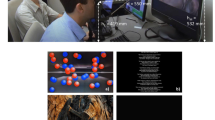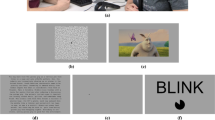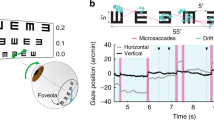Abstract
RECENT work on the time course of eye movements has led to the development of a new technique of measurement. This was required to deal, in addition to the normal static situation, with conditions where space and the rigid laboratory bench are absent; for example, in a rotating chair and the human centrifuge. A wide range of sensitivity, simplicity and robust construction were considered most important, and since recordings could only be made via a slip ring system, an electrical output signal was essential. The instrument finds additional applications in circumstances where it is advantageous to keep to a minimum the loading of a deflected member, the movement of which is to be recorded.
This is a preview of subscription content, access via your institution
Access options
Subscribe to this journal
Receive 51 print issues and online access
$199.00 per year
only $3.90 per issue
Buy this article
- Purchase on Springer Link
- Instant access to full article PDF
Prices may be subject to local taxes which are calculated during checkout
Similar content being viewed by others
References
Ditchurn, R. W., and Ginsborg, B. L., J. Physiol., 119, 1 (1953).
Ratcliff, F., and Riggs, L. A., J. Exp. Phychol., 40, 687 (1950).
Fender, D. H., Brit. J. Ophthal., 39, 65 (1955).
Ginsborg, B. L., Brit. J. Ophthal., 37, 12, 746 (1953).
Westheimer, G., Amer. Med. Assoc. Arch. Ophthal., 52, 710 (1954).
Author information
Authors and Affiliations
Rights and permissions
About this article
Cite this article
BYFORD, G. Eye Movement Recording. Nature 184, 1493–1494 (1959). https://doi.org/10.1038/1841493a0
Issue Date:
DOI: https://doi.org/10.1038/1841493a0
This article is cited by
-
Subjective Analysis of Saccadic Eye Movements
Nature (1961)
Comments
By submitting a comment you agree to abide by our Terms and Community Guidelines. If you find something abusive or that does not comply with our terms or guidelines please flag it as inappropriate.



